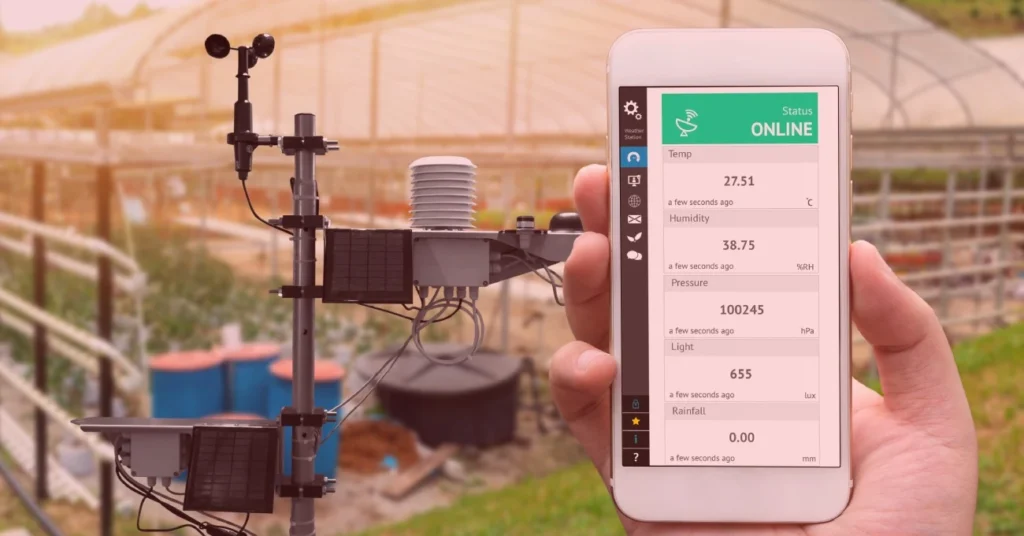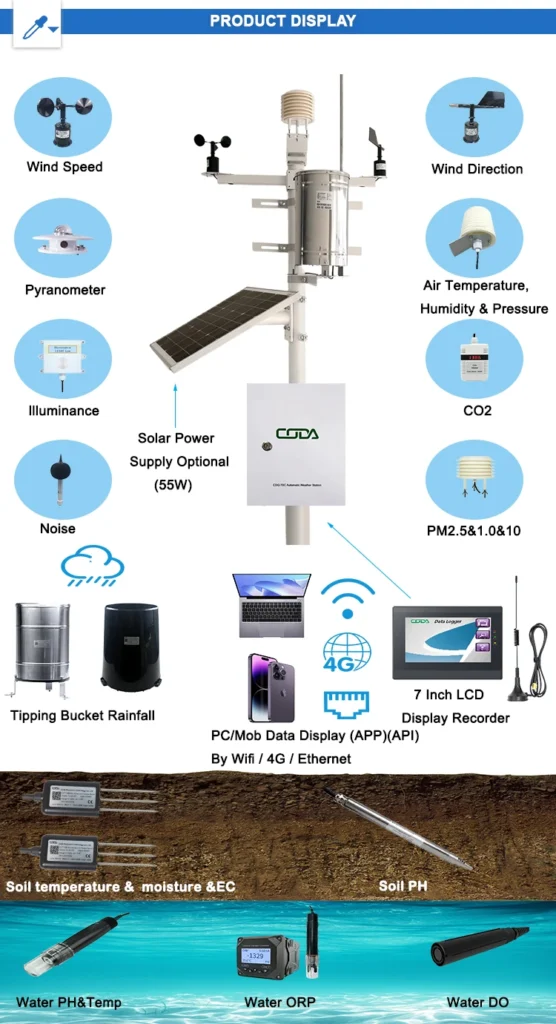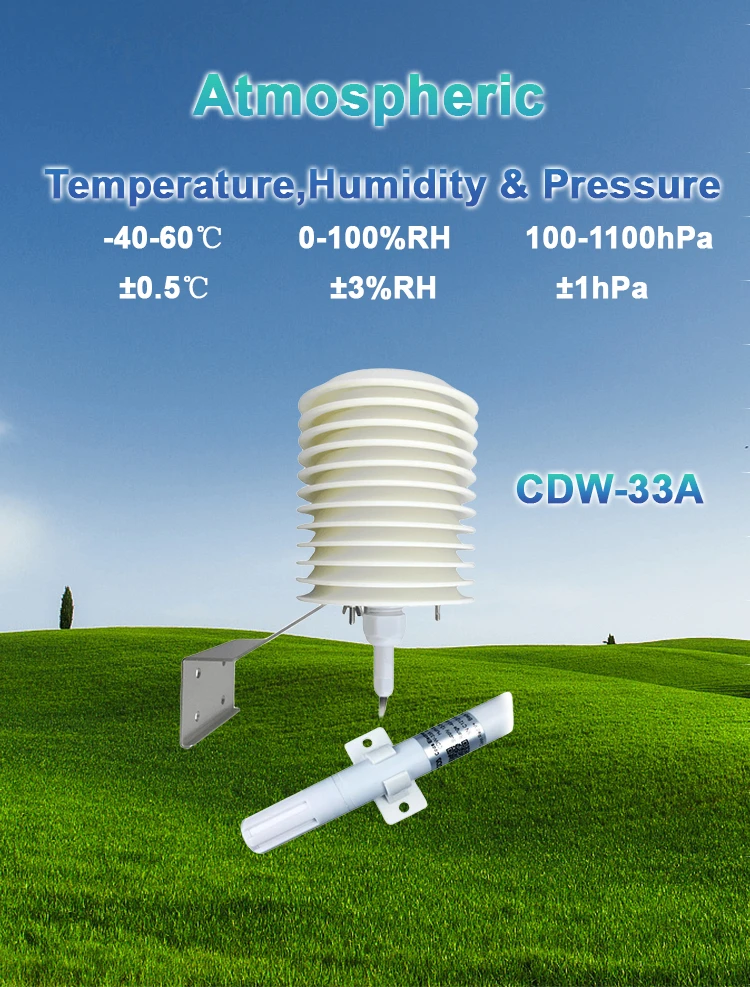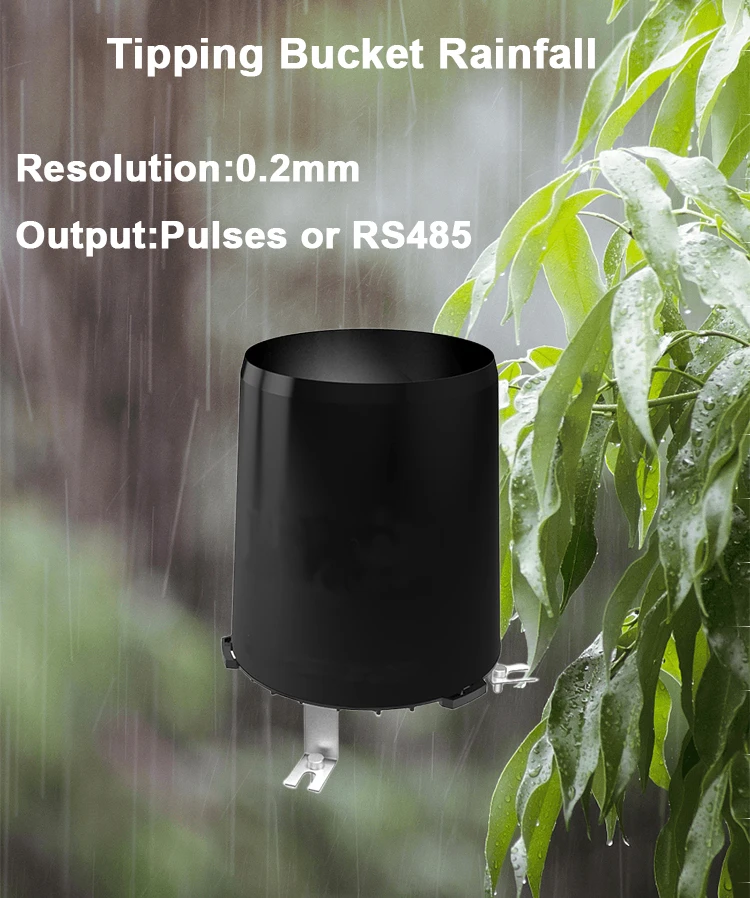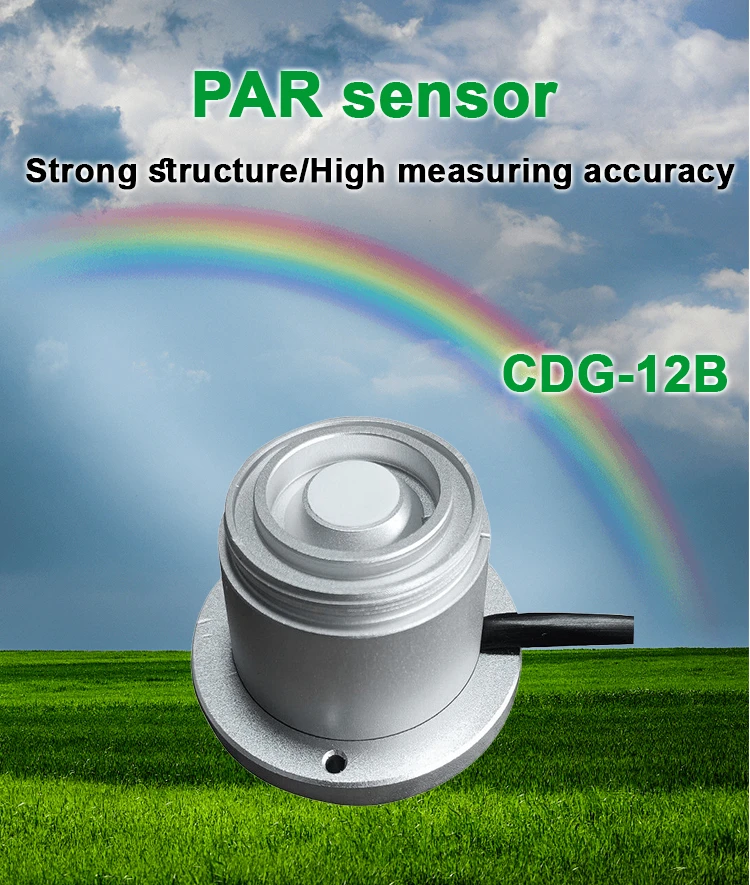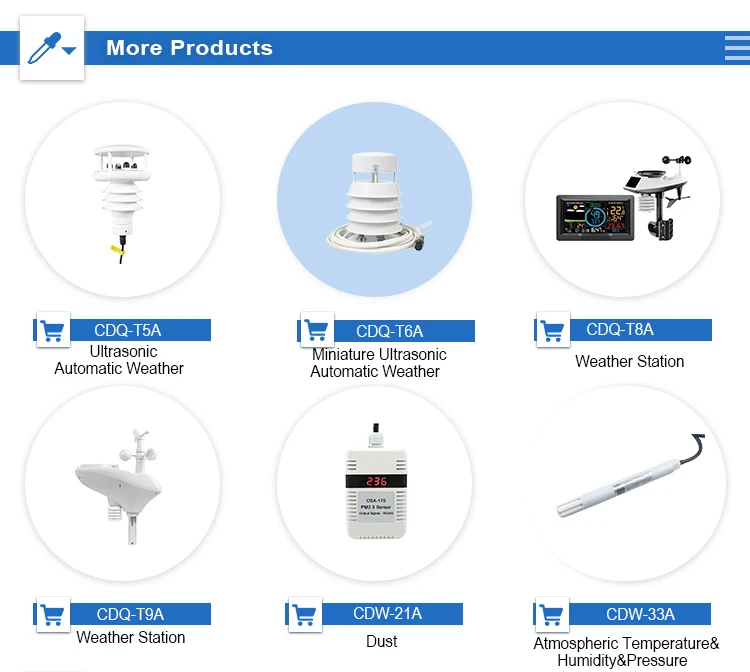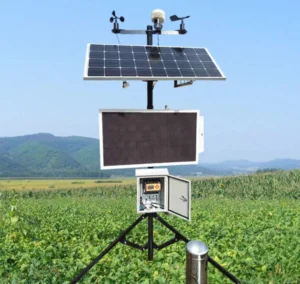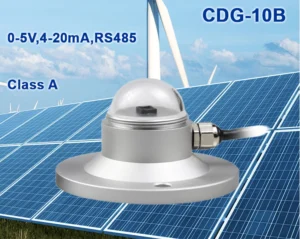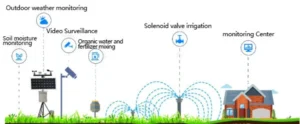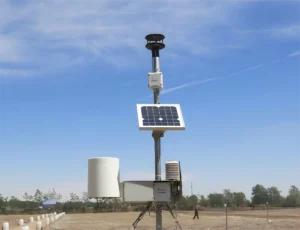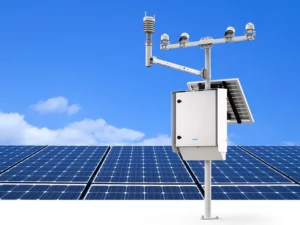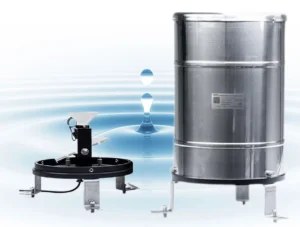how do we monitor weather
Monitor weather is the cornerstone of predicting climate patterns, safeguarding communities from extreme events, and informing decisions in agriculture, transportation, and energy sectors. At the heart of this process are sensors—advanced devices that convert environmental phenomena into measurable data. This article explores how sensors enable precise weather monitoring, their types, and their applications in building resilient weather systems.
The Foundation of Weather Monitoring: Sensor Technology
Sensors act as the “eyes and ears” of meteorological systems, detecting physical quantities like temperature, humidity, wind, and rainfall. Modern sensors are different from traditional tools like thermometers and rain gauges. They provide real-time data and connect remotely. Their high precision makes them essential for today’s weather networks.
Key Types of Weather Sensors
1. Temperature and Humidity Sensors
Function: Measure air temperature (in °C or °F) and relative humidity (%)—critical for predicting heatwaves, frost, or fog.
Technology:
Thermistors or thermocouples for temperature (e.g., Vaisala HMP155).
Capacitive or resistive sensors for humidity, which detect water vapor absorption in materials like polymers.
Application: Used in weather stations, agricultural fields, and urban heat island studies.
2. Wind Sensors
Function: Measure wind speed (m/s or mph) and direction (degrees).
Technology:
Anemometers (e.g., cup anemometers for speed, wind vanes for direction).
Ultrasonic anemometers (e.g., Young 81000) that use sound waves to detect wind without moving parts, ideal for harsh environments.
Application: Essential for aviation, renewable energy (wind farms), and storm tracking.
3. Rainfall Sensors
Function: Measure rainfall (mm/hr) or snowfall (in equivalent water depth).
Technology:
Tipping bucket rain gauges (e.g., Davis Instruments 7950) that count drops via a tilting mechanism.
Weather radars (e.g., Doppler radar) for large-scale rainfall mapping, using radio waves to detect raindrop intensity.
Application: Critical for flood forecasting, water resource management, and agricultural irrigation.
4. Air Pressure Sensors
Function: Measure atmospheric pressure (hPa), a key indicator of monitor weather systems (e.g., high pressure = clear skies; low pressure = storms).
Technology:
Barometers, often using MEMS (micro-electromechanical systems) sensors (e.g., Bosch BMP388).
Application: Integrated into smartphones and portable weather stations for real-time pressure trends.
5. Solar and UV Sensors
Function: Measure solar irradiance (W/m²) and ultraviolet (UV) radiation levels.
Technology:
Pyranometers (e.g., Kipp & Zonen CMP3) for solar energy; UV meters (e.g., Solar Light PMA2100) for UV index calculations.
Application: Solar energy production, public health advisories (sunburn risk), and ecosystem studies.
Modern weather monitoring relies on sensor networks that integrate multiple devices and data platforms:
1. Sensor Deployment
Ground-Based Stations:
Weather stations, like the Davis Vantage Pro2, have sensors for temperature, humidity, wind, and rain. They often use solar panels for power.
Urban sensors: Deployed on buildings or street poles to monitor small-scale climates, air quality (e.g., PM2.5 sensors), and noise levels.
Remote and Mobile Sensors:
Weather balloons carry sensors and transmitters. They measure upper-air conditions like temperature, pressure, and wind. These measurements can reach up to 30 km in altitude.
Satellites like geosynchronous ones (e.g., GOES) and polar-orbiting ones (e.g., NOAA’s JPSS) use sensors. They measure infrared and visible light. These satellites map cloud cover, ocean temperatures, and storm systems around the world.
Drones and UAVs have sensors that can check the monitor weather in hard-to-reach places. This includes areas like mountains and disaster zones.
2. Data Transmission and Integration
Wireless Protocols: Sensors use Wi-Fi, LoRaWAN, or 4G to send data. They send this data to gateways or cloud platforms like AWS IoT or Weather Underground.
Open Standards: Protocols such as MQTT and HTTP help devices work together. Platforms like WeatherLink and WunderMap collect data into easy-to-use dashboards.
Modeling and Forecasting: Raw sensor data enters numerical weather prediction (NWP) models, like GFS and ECMWF. These models simulate atmospheric conditions and create forecasts.
Applications: How Sensor Data Drives Impact
1. Agriculture and Food Security
Use Case: Farmers use soil moisture sensors, like the Decagon EC-5, and weather stations. They do this to improve irrigation, save water, and predict crop diseases. For example, high humidity and temperature can lead to fungal outbreaks.
Example: Smart farming systems, like John Deere’s Climate Pro, use real-time weather data. They automate manuring and pesticide application.
2. Disaster Preparedness
Use Case: Doppler radar and rainfall sensors detect early signs of hurricanes, tornadoes, or flash floods. Emergency management teams use this data to issue alerts and evacuate communities.
The Flood Early Warning System (FEWS) in Bangladesh uses sensors and weather models. It predicts monsoon flooding and saves thousands of lives each year.
3. Renewable Energy
Use Case: Wind farms use ultrasonic anemometers to measure wind speed and direction, optimizing turbine placement and energy output. Solar plants rely on pyranometers to track solar radiation and adjust panel angles.
Example: Tesla’s Solar Roof integrates weather data to predict energy production and storage needs.
4. Urban Sustainability
Use Case: Cities like Singapore use IoT weather sensors. These sensors monitor heat islands, air quality (like CO₂ and O₃), and rainfall. This information helps shape policies on green spaces, public transport, and rainwater runoff management.
The City of London’s Urban Monitoring station uses sensors to measure over 200 environmental factors. This helps guide sustainable city design.
Challenges and the Future of Weather Monitoring
Challenges:
Sensor Calibration: Ensuring accuracy over time, especially in harsh environments (e.g., salt spray near coasts, dust in deserts).
Data Overload: Managing vast amounts of real-time data from millions of sensors requires advanced AI and edge computing.
Equity: Developing regions often lack access to high-quality sensors, creating gaps in global weather networks.
Future Trends:
AI and machine learning can improve short-term weather predictions. They can also detect small climate patterns in sensor data.
Compact smartphone design and Cost Reduction: Low-cost sensors, like $20 DIY weather stations, will help expand monitoring networks. such as citizen science projects like Weather Underground, will also play a role.
Satellite Innovations: New satellites, like ESA’s EPS-SG, and cube satellites will give us better data. This includes data on small weather events.
Conclusion: Sensors—The Unsung Heroes of Weather Science
Sensor technology has changed how we understand the atmosphere. It ranges from small MEMS sensors in smartphones to large Doppler radars. Sensors help communities monitor their environment in real-time. This allows them to adapt to climate change, reduce disasters, and create sustainable futures. As technology improves, AI, IoT, and sensor networks will provide better weather solutions. This will ensure that every part of the planet is monitored.
